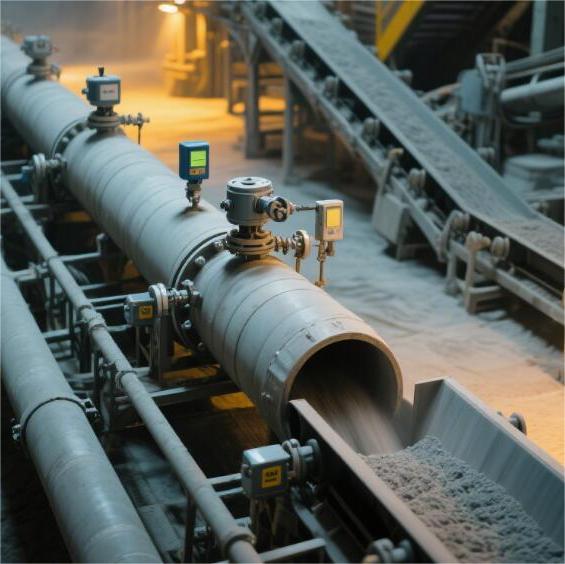
search
Cement plays a pivotal role in building structures that stand the test of time, but did you know that temperature control during production is one of the critical factors that determines cement's performance? If you're in the cement production or construction industry, understanding the importance of a cement cooling system is a necessity. In this blog, we'll dive into why cooling cement matters, explore the technology behind cement cooling systems, and reveal how FSESCM’s innovative solutions can transform your production process.
A cement cooling system is a specialized technology designed to regulate the temperature of cement during and after its production. Cement production involves grinding clinker into fine powder, and this process generates significant heat. Without cooling, this heat can compromise cement quality by altering its properties.
Cement cooling systems use various methods, such as cold air, chilled water, or cooling jackets, to reduce the high temperatures generated during grinding and storage. The goal is to ensure uniform cooling and maintain the optimal temperature of the final product, usually under 70°C.
Key Cooling Methods:
Indirect Heat Exchangers: Transfer heat from cement to a cooling medium without direct contact.
Cooling Drums and Fluid Bed Coolers: Use air streams or water to extract heat.
Rapid Air Cooling: Primarily used in modern setups to ensure efficiency.
Modern cement cooling systems integrate advanced technologies like automation and sensors to monitor temperature levels in real time, ensuring consistent quality.
Innovative cement cooling systems, such as those by FSESCM, now focus on energy efficiency, scalability, and environmental sustainability. Smart designs reduce energy consumption, enhance durability, and allow industries to meet production demands sustainably.

Cement production faces significant challenges due to excessive heat. During the grinding process, cement temperatures can rise dramatically, leading to issues in performance, durability, and usability. Let’s explore these challenges and how cooling can mitigate them.
Moisture Loss: Without cooling, high cement temperatures can cause excessive evaporation of moisture, reducing workability.
Decreased Strength: Heat affects hydration reactions, leading to weak end-products vulnerable to cracks and damage.
Thermal Stress and Cracks: High cement temperatures can result in thermal stress during application, causing cracks in infrastructure.
Maintaining optimal cement temperatures ensures:
Stable hydration reactions, improving strength and consistency.
Better compatibility with additives and admixtures.
Safer storage and transport, as overheating can also lead to combustion risks.
Cement cooling systems are especially critical for large-scale construction projects, such as dams, bridges, and skyscrapers, where quality cannot be compromised.
Investing in a cement cooling system brings a host of benefits that extend beyond production quality. From improving performance to reducing environmental impact, here's why implementing a cooling system is a game-changer:
Cooled cement has better hydration properties, ensuring higher compressive strength and reduced risk of cracking.
Cement cooling systems maintain optimal temperature ranges, allowing better integration of additives, leading to desired construction outcomes.
Advanced cooling technologies, such as those by FSESCM, are designed to reduce energy usage during production, contributing to a sustainable manufacturing process while lowering operational costs.
Cooling cement minimizes thermal stress, preventing early-age cracking in structures—an essential factor for projects like dams or high-rise buildings.
By reducing fail rates, improving quality, and cutting energy consumption, a proper cooling system saves substantial costs in the long run.
When it comes to innovative cement cooling solutions, FSESCM leads the way. With years of expertise, FSESCM offers state-of-the-art cooling systems tailored to your specific production needs.
Customizable Systems: Tailored to meet your unique production and capacity requirements.
Energy Efficiency: Designed to optimize energy usage, reducing environmental impact.
Cutting-Edge Technology: Incorporates smart monitoring systems for real-time temperature control.
Reliable Support: Industry-leading after-sales service ensures peace of mind for your operations.
Looking for the perfect cooling system for your cement production needs? Contact FSESCM today for a free consultation and explore solutions that redefine cement production.
Selecting the right cooling system requires an understanding of your production requirements and long-term goals. Here are the top factors to consider:
Capacity and Scalability: Choose a system that can handle your current production levels and expand as your operations grow.
Energy Efficiency: Prioritize systems that lower operational costs and reduce your carbon footprint.
Reliability and Reputation: Work with trusted providers like FSESCM for high-quality solutions backed by expert support.
Technology Integration: Look for cutting-edge features such as automation, smart sensors, and remote monitoring.
FSESCM cooling systems meet all these criteria, making them a top choice for industry leaders worldwide.
Cooling cement during production is not just an operational need but a requirement for ensuring superior quality, sustainability, and cost efficiency. By implementing a modern cement cooling system, manufacturers can overcome production challenges, improve product quality, and adhere to industry demands.
At FSESCM, we specialize in providing advanced, customizable cement cooling solutions designed to meet diverse needs. From energy efficiency to scalability, we’re redefining the standards of cement cooling technology.